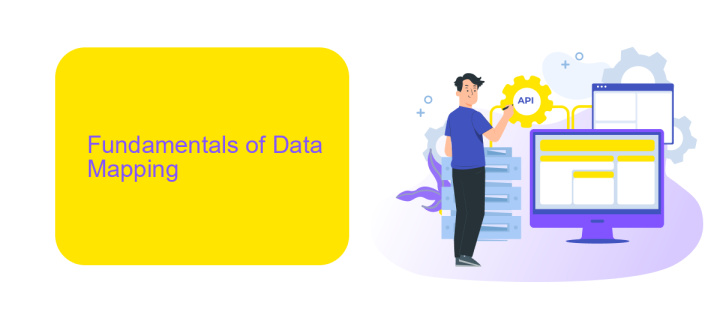Data Mapping in ETL
Data mapping is a crucial step in the ETL (Extract, Transform, Load) process, ensuring that data from various sources is accurately transformed and loaded into a target system. It involves defining how data fields from the source are connected to the destination, enabling seamless data integration, consistency, and reliability. This article explores the importance, techniques, and best practices of data mapping in ETL workflows.
Introduction
Data mapping is a crucial component of the ETL (Extract, Transform, Load) process, serving as the bridge between data sources and their target destinations. It involves defining how data fields from a source system are transformed and loaded into a destination system, ensuring data consistency, quality, and accuracy.
- Extract: This phase involves retrieving data from various sources, such as databases, APIs, and flat files.
- Transform: During this stage, data is cleansed, enriched, and transformed to fit the target schema.
- Load: The final step involves loading the transformed data into the target system, such as a data warehouse or a data lake.
Effective data mapping is essential for seamless data integration and analytics. Tools like ApiX-Drive simplify the integration process by providing automated workflows and real-time data synchronization between various systems. By leveraging such services, organizations can ensure that their data mapping efforts are efficient, accurate, and scalable.
Fundamentals of Data Mapping

Data mapping is a critical process in ETL (Extract, Transform, Load) that involves matching fields from the source data to the destination data. This ensures that data is accurately transferred and transformed from one system to another. The process typically begins with a thorough analysis of both the source and target systems to understand their data structures. This analysis helps in identifying the correct mappings and transformations needed to ensure data integrity and consistency.
Effective data mapping requires a clear understanding of the data types, formats, and business rules involved. Tools and services like ApiX-Drive can significantly streamline this process by automating the integration and mapping tasks. ApiX-Drive offers an intuitive interface for setting up data workflows between various systems, reducing the manual effort and potential for errors. By leveraging such tools, organizations can ensure a smoother and more reliable data migration, which is essential for maintaining operational efficiency and making informed business decisions.
Techniques and Strategies

Data mapping in ETL processes is crucial for ensuring accurate data transformation and integration. Various techniques and strategies can be employed to achieve effective data mapping, each with its own set of advantages and applications.
- Manual Mapping: This method involves manually defining the relationships between source and target data fields. It is suitable for smaller datasets and offers high customization.
- Automated Mapping: Tools like ApiX-Drive can automate the mapping process, reducing the time and effort required. These tools use algorithms to identify and match data fields, ensuring consistency and accuracy.
- Schema Mapping: This technique involves aligning the source and target schemas. It is particularly useful when dealing with complex data structures and ensures that all necessary fields are correctly mapped.
- Semantic Mapping: This approach focuses on the meaning and context of the data, ensuring that the mapped data is semantically equivalent. It is ideal for integrating data from diverse sources.
Choosing the right data mapping strategy depends on the specific requirements of the ETL process, the complexity of the data, and the tools available. By leveraging advanced tools like ApiX-Drive, organizations can streamline their data mapping efforts, ensuring efficient and accurate data integration.
Tools and Technologies

Data mapping in ETL processes requires robust tools and technologies to ensure accurate and efficient data transformation. Selecting the right tools can significantly enhance the quality and speed of data integration, making the entire ETL process more streamlined.
Various tools and technologies are available to aid in data mapping. These tools range from specialized ETL software to comprehensive data integration platforms. They help in automating the mapping process, reducing manual efforts, and minimizing errors.
- ETL Software: Talend, Informatica, Apache Nifi
- Data Integration Platforms: Microsoft SQL Server Integration Services (SSIS), Apache Kafka
- Cloud-Based Solutions: AWS Glue, Google Cloud Dataflow
- Integration Services: ApiX-Drive for seamless API integration
Using these tools and technologies, organizations can efficiently manage their data mapping needs. For instance, ApiX-Drive offers a user-friendly interface for setting up integrations, making it easier to connect various data sources and automate data flows. This ensures that data is accurately mapped and ready for analysis, enhancing overall data quality and reliability.
- Automate the work of an online store or landing
- Empower through integration
- Don't spend money on programmers and integrators
- Save time by automating routine tasks
Best Practices and Considerations
When performing data mapping in ETL processes, it is crucial to ensure data accuracy and consistency. Start by thoroughly understanding the source and target data structures, including data types, formats, and relationships. Document the mapping rules and transformations clearly to avoid any ambiguity. Automate the mapping process where possible to reduce errors and improve efficiency. Tools like ApiX-Drive can be invaluable for setting up seamless integrations and automating data flows between various systems.
Consider data quality and validation checks at each stage of the ETL process. Implement robust error handling and logging mechanisms to quickly identify and resolve issues. Regularly review and update your data mappings to accommodate changes in source or target systems. Additionally, ensure that the data mapping process complies with relevant data governance and security policies to protect sensitive information. By adhering to these best practices, you can achieve a reliable and efficient ETL workflow.
FAQ
What is data mapping in ETL?
Why is data mapping important in ETL processes?
What are common challenges in data mapping?
How can automation tools help with data mapping in ETL?
What are the best practices for data mapping in ETL?
Apix-Drive is a simple and efficient system connector that will help you automate routine tasks and optimize business processes. You can save time and money, direct these resources to more important purposes. Test ApiX-Drive and make sure that this tool will relieve your employees and after 5 minutes of settings your business will start working faster.


